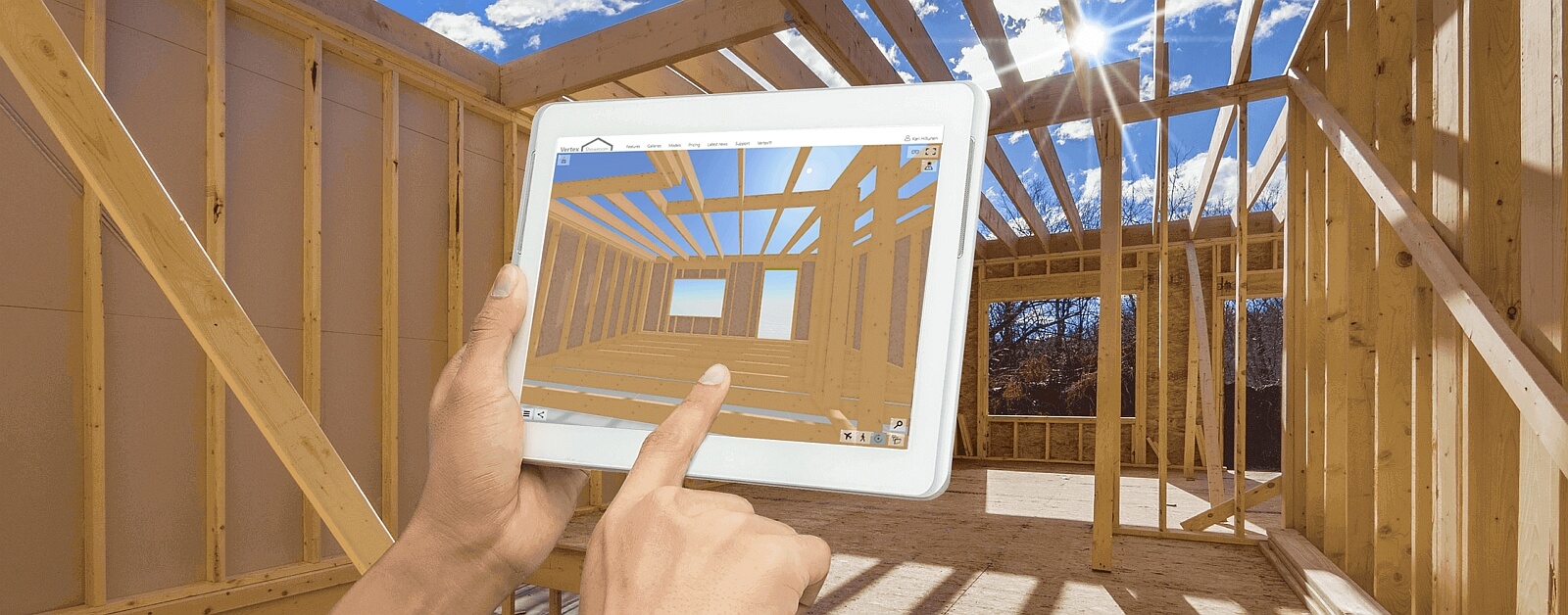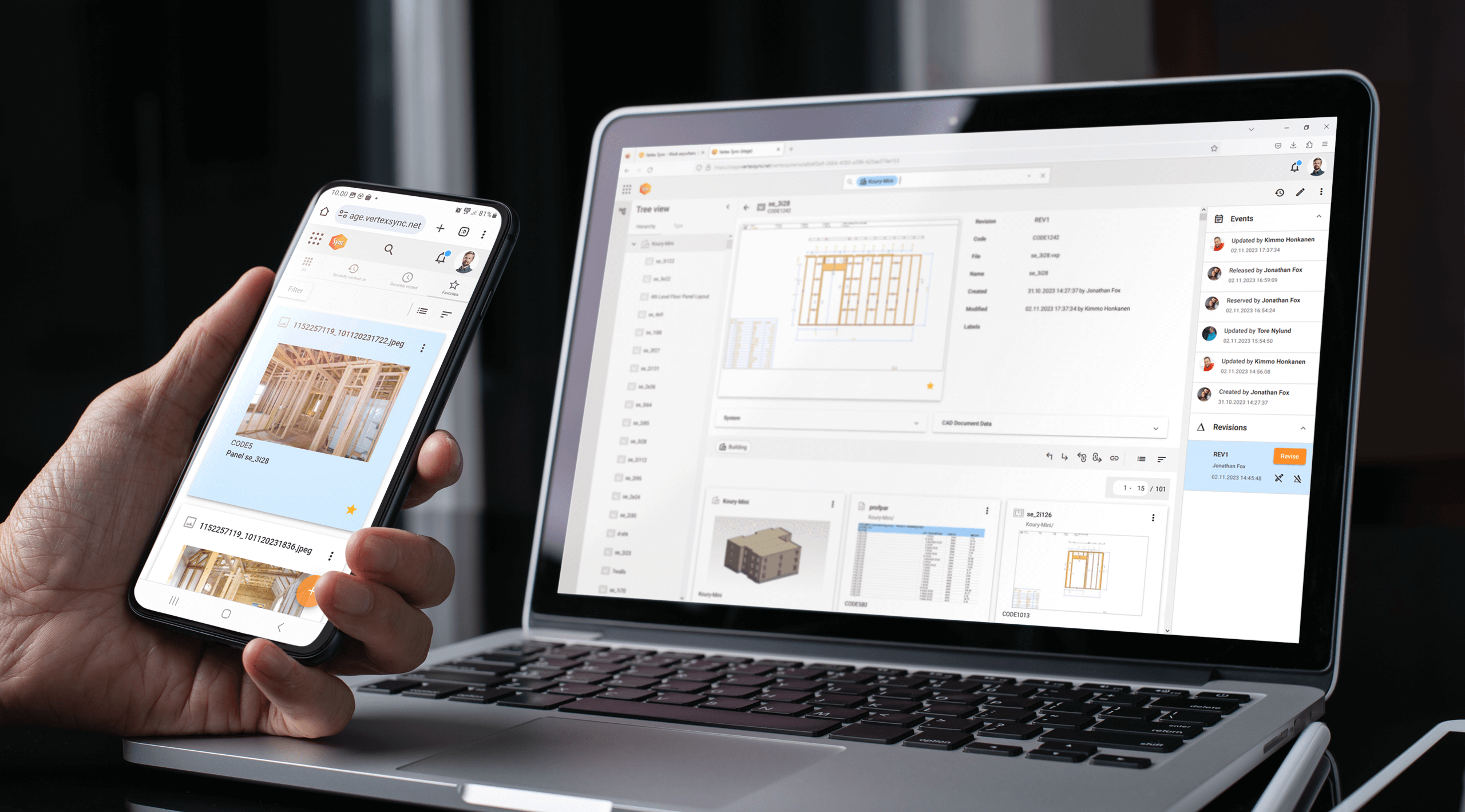What is BIM Software? 5 tips to leverage it in your business
Building Information Modeling (BIM) software has become an essential tool in the architecture, construction, and engineering industries, revolutionizing how building projects are designed, managed, and executed. BIM modeling software, such as Vertex BD, helps streamline processes by integrating 3D modeling with critical data, enabling collaboration across teams and reducing errors during production. BIM software offers significant advantages by automating design and manufacturing workflows, improving efficiency, and minimizing material waste.
What is BIM software?
Building Information Modeling (BIM) software is a powerful tool used in the architecture, engineering, and construction (AEC) industries to design, visualize, and manage building projects. Unlike traditional CAD (Computer-Aided Design) tools, which focus primarily on creating 2D or 3D design representations, BIM goes beyond basic modeling by integrating critical information related to materials, schedules, costs, and more into a comprehensive digital model. This allows stakeholders to access a single, unified source of truth throughout the entire project lifecycle, from conceptual design through construction and maintenance.
One of the major advantages of BIM software is its ability to support real-time collaboration. Multiple teams — such as architects, engineers, contractors, and clients — can work on the same project simultaneously, accessing the most up-to-date model and information. This collaborative environment significantly reduces communication gaps, minimizes errors, and improves decision-making, as all parties have visibility into the project’s progress and any potential issues.
BIM offers enhanced visualization, providing highly detailed 3D models that give stakeholders a realistic representation of the final product. These models help in identifying design conflicts or “clashes” between different systems, such as mechanical, electrical, and plumbing, before actual construction begins. BIM software can also simulate construction timelines, evaluate energy efficiency, and predict the lifecycle costs of materials, making it an invaluable tool for improving project accuracy, sustainability, and efficiency.
In an industry where reducing waste, minimizing risk, and delivering projects on time and within budget are critical, BIM software plays a vital role in optimizing workflows and ensuring successful project outcomes.

Key benefits of BIM software:
- Centralized data management: All design, construction, and operational data are kept in one place, ensuring all team members have access to the most current and relevant information.
- Improved collaboration: BIM software allows real-time data sharing between architects, engineers, and contractors, reducing errors and misunderstandings.
- Enhanced visualization: Detailed 3D models provide a realistic view of the project, helping stakeholders better understand design concepts and make informed decisions.
- Better resource management: BIM enables accurate material quantity estimates and cost projections, reducing waste and optimizing resource use.
- Sustainability and efficiency: BIM helps to incorporate sustainable building practices by analyzing the building’s lifecycle and minimizing environmental impact.
5 Tips to leverage BIM modeling software in your business
1. Integrate BIM early in the design phase
Incorporating BIM at the very beginning of the design process helps identify potential issues before they arise. It enables all stakeholders to visualize the final product, reducing costly changes later. This proactive approach ensures that teams can work together from the outset, providing valuable input from all disciplines involved in the project.
2. Utilize automation and prefabrication
One of the standout features of BIM software is the ability to automate repetitive tasks, such as generating floor plans or quantity take-offs. By automating these processes, teams can save time and focus on more critical aspects of the project. Furthermore, many BIM platforms support prefabrication, allowing components to be manufactured off-site, improving accuracy, reducing on-site labor, and speeding up project completion.
3. Leverage real-time collaboration tools
BIM modeling software excels in providing collaborative environments where architects, engineers, contractors, and clients can share updates and communicate efficiently. This real-time collaboration reduces the need for multiple revisions and enables faster decision-making. With cloud-based features, teams can access the latest versions of models and plans from anywhere, ensuring that everyone stays on the same page.
4. Implement clash detection for error-free construction
One of the most critical aspects of BIM software is its ability to detect clashes between different systems (e.g., electrical, plumbing, and HVAC) before construction begins. Clash detection identifies potential conflicts in the design, allowing teams to resolve issues digitally rather than dealing with costly and time-consuming errors during construction. This feature not only minimizes rework but also ensures higher-quality outcomes.
5. Connect BIM with project management tools
Many BIM platforms, such as Vertex BD, can be used with project management tools to track the progress of construction, manage costs, and maintain timelines. This collaboration allows for better oversight and ensures that the project is completed on schedule and within budget. By connecting BIM with these systems, construction managers can keep stakeholders informed and address issues as soon as they arise.

How Vertex BD Benefits builders with BIM software
Vertex BD is a specialized BIM software designed for builders, particularly focusing on timber and cold-formed steel framing. It stands out by automating both design and manufacturing processes, allowing builders to streamline their workflow.
By using Vertex BD, builders can complete projects faster and with greater precision while reducing production errors. This automation ensures that builders can meet the specific demands of construction projects efficiently, offering significant improvements in accuracy and productivity. Here’s how Vertex BD can enhance your operations:
1. Customized configurations
2. Faster project delivery
3. Reduced material waste
Vertex BD optimizes material usage by providing accurate quantity take-offs and detailed fabrication data. This helps builders reduce waste, lower costs, and maintain sustainability goals. Accurate material estimation also ensures that projects remain within budget, minimizing financial risk.
4. Enhanced visualization and communication
The 3D models created in Vertex BD help builders communicate more effectively with clients and other stakeholders. Homebuyers can visualize their future homes before construction begins, which can lead to quicker approvals and fewer design changes. Additionally, contractors can use the software to better understand the layout and structural details of the project.
5. Scalability for large-scale projects
Whether you’re working on residential or commercial developments, Vertex BD’s BIM capabilities allow for seamless scaling making it ideal for builders.
Read more about Vertex BD or try it out for free now!

Conclusion
BIM software has revolutionized the construction industry by improving collaboration, accuracy, and efficiency. For builders, platforms like Vertex BD offer significant advantages, from automating design processes to reducing material waste and ensuring faster project delivery. By adopting and leveraging BIM modeling software, companies can streamline their operations, minimize errors, and ultimately deliver better outcomes for their clients. Whether you’re just starting with BIM or looking to enhance your current systems, implementing these tips can help you get the most out of your BIM investment.

